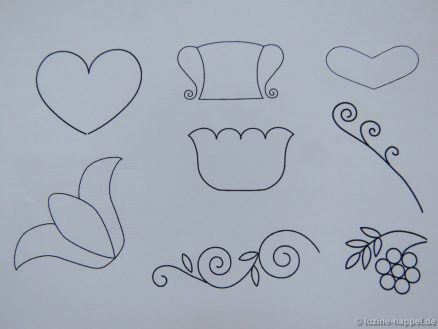Not everyone has the aptitude to come up with and draw their own designs. Usually, when embroidering Schwalm patterns, already existing designs are used. This saves you a lot of work and allows you to choose the right one from the wide range of products that now exists.
But how are such drawings created?
First you need an idea. The typical Schwalm designs should contain larger elements such as areas suitable to embroider with filling patterns and small surrounding and connecting ones such as stems and leaves. Of course, the pattern should also differ from existing designs.
After the idea, a rough sketch is made and then gradually developed into a balanced pattern. What size should the pattern have? What form should it take? In what proportion of size and at what distance should the individual motifs stand from each other?
What kind of leaves should be added – pointed or rounded, divided or undivided? How many should there be? At what angle should branches of stems take place? How often should tendrils twist in? Which enhancing embellishment should the motifs get – half-eyelet scallops, knife points, 2short-2lang? ….. and, and and.
Once the sketch has finally matured and the pattern appears balanced, a thin-line final drawing is usually created by hand with the help of pencil and eraser, drawing board, ruler, triangle, protractor, a pair of compasses and various drawing devices or stencils. (Computer drawing programs have so far only been used extremely rarely by the mostly older designers for Schwalm whitework patterns.)
In order to move from the idea to a coherent, sophisticated and precisely drawn Schwalm outline pattern, a lot of work and time is required to create a design.
In most cases, the designers only charge a very small amount for their services, and many of the designs are only redistributed in very small quantities. So the wage for the hours of painstaking work is rather meagre.
Therefore, it should be self-evident that the copyright of the designers is respected.






Leave a Reply